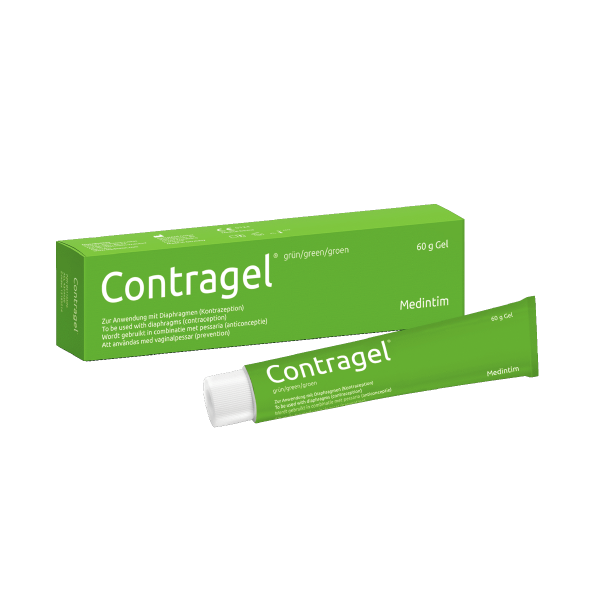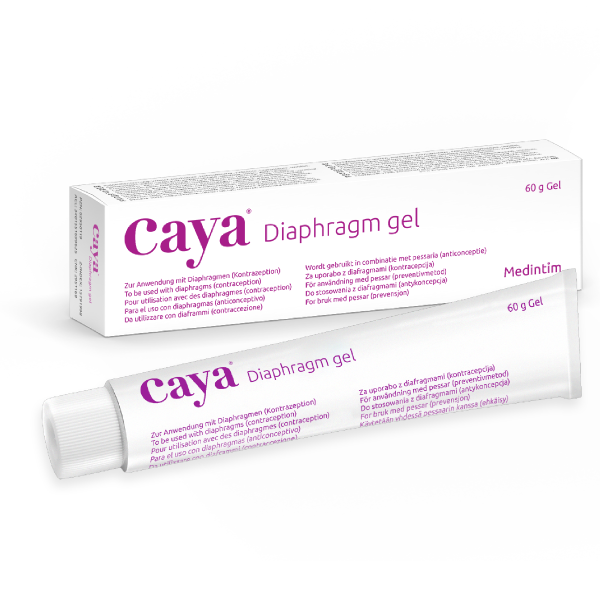Spermicide & Contraceptive Gels

Since the sexual revolution of the 1960's when the diaphragm introduced instantly reversible, female controlled contraception to the world, the demand for spermicide to accompany it was immediatley created.
Spermicide is a substance used for contraceptive that kills sperm. In order to prevent pregnancy effectively, spermicide should be inserted into the the vagina before sexual intercourse.
Most spermicides, other than Lanzas Contraceptive Jelly, are not strong enough to be used on their own as your only form of contraception. The failure rate of using only spermicide as a contraceptive is higher than using other forms of birth control.
To achieve maximum effectiveness, most spermicides are used with contraceptive barriers such as cervical caps, condoms, diaphragms and sponges. The failure rate of spermicide when combined with these contraceptive barriers is much lower than if either was used alone.
Nonoxynol 9 (Nonionic surfactant) - or as some now call it, 'Nasty-9'
Nonoxynol-9 (N-9) is the most common active ingredient in spermicide. Spermicides which contain N-9 come in many forms such as gels, films and foams. Nonosynol-9 is an organic compound that is used as a surfactant and is a member of nonoxynol family of nonionic surfactants. Cleaning and cosmetic products often contain N-9 and related compounds. Because it has been known to cause genital lesions, the use of N-9 is often controversial.
When researchers observed Nonoxynol-9’s ability to kill microbes in vintro, they initially thought it could be used to prevent the transmission of sexual transmitted diseases (STDs). Recent research, however, has found that N-9 might actually increase a person’s risk of contracting STDs, especially when frequently used. Researchers came to this conclusion after noticing that N-9 causes tiny abrasions inside the sensitive vaginal and anal walls.
The UN sponsored a study in several locations in Africa from 1996-2000. During those four years, researchers followed 1000 sex workers who used Nonoxynol-9 gels or a placebo before engaging in sexual intercourse. The HIV infection rate among the workers that had used N-9 was around 50% higher than those who had used the placebo. The N-9 users also experienced more vaginal lesions than the placebo users, which may have contributed to the higher risk of HIV infection.
While, these results may not apply to those that only use N-9 occasionally, the results of the UN study have led major health agencies to recommend that N-9 no longer be used by women who are at risk of contracting the HIV infection. According to the World Health Organisation (WHO), “Nonoxynol-9 offers no protection against sexually transmitted infections such as gonorrhoea or chlamydia."
Using Nonoxynol-9 on a regular basis may also increase the risk of contracting human papillomaviruses (HPVs) which are transmitted sexually. This risk is especially serious because HPVs may cause cervical cancer. Researchers at the National Cancer Institute reported that the risk of contracting HPVs from using N-9 was decreased when N-9 was mixed with an equal amount of a carrageenan-based lubricant. Divine No. 9 and BIOglide are two consumer products that were found to prevent detectable HPV infection in the study.
Condoms used with spermicide are believed to be more efficient than those used without. This is only true in certain cases. For example, condoms that are bought pre-lubricated with spermicide don’t actually contain enough spermicide to prevent pregnancy. These spermically lubricated condoms have a shorter shelf life than normal condoms and may also cause urinary tract infections in women. The WHO no longer promotes this type of condom but recommends using them in place of no condom at all.
Although generally uncommon, Nonoxynol-9 has been associated with a number of possible side effects such as irritation, itching or burning of the sex organs in either partner. Women may also experience urinary tract infections, yeast infections and bacterial vaginosis after using N-9.
The increased risk of birth defects in children conceived despite spermicide use and those whose mother continued using spermicide while unaware of initial pregnancy, has also been a concern associated with N-9 spermicides. Conversely, a review of a large study of spermicides concluded that “there appears to be no increased risk of congenital anomalies, altered sex ratio, or early pregnancy loss among N9 spermicide users.” Toxic Shock Syndrome has also been associated with the use of N-9.
Because of its low cost and general effectiveness, health authorities in many different countries have approved the use of N9, including the NHS in the UK with Gygel and the FDA in the US with Gynol.
Octoxynol-9 (Nonionic surfactant)
Octoxynol-9 (also known as Triton X-100) is made with a different chemical than N-9 but is still a “nonionic surfactant”. Spermicides made with Octoxynol-9 may be good alternatives for people who experience unpleasant reactions or allergies after using Nonoxynol-9. Products which contain Octoxynol-9 include Koromex Cream and Ortho-Gynol Jelly. Unfortunately, these products can be hard to find.
Benzalkonium Chloride (Cationic surfactant)
Benzalkonium chloride (also known as alkyldimethylbenzylammonium chloride and ADBAC) is a mixture of alkylbenzyldimethylammonium chlorides of various even-numbered (alkyl) chain lengths. This product is a nitrogenous cationic surface-acting agent similar to Nonoxynol 9 and Octoxynol-9. ADBAC is most commonly found in vaginal suppositories, vaginal creams and vaginal tablets manufactured in France by Pharmatex. ADBAC is also the active ingredient in Lanzas Contraceptive Cream which is distributed in Spain by Faes Farm S.A.
Lactic Acid Based "Natural Alternatives" To Spermicide*
Lactic-acid based spermicides are made from natural ingredients and provide users who experience adverse reactions to spermicides filled with chemicals, such as N-9, with a safe alternative. Contragel Green, sometimes rebranded as Caya Gel is the most popular lactic-acid based alternative on the market. This medical study reflects on their effectiveness:
Because lactic-acid based spermicides such as ContraGel Green are water soluble, they are safe to use with natural latex rubber and polyurethane condoms, latex and silicon rubber diaphragms, and cervical caps. ContraGel Green forms a mechanical barrier with a low PH value in front of the cervix when used with a diaphragm or cervical cap. This inhibits and immobilizes the sperm. When used together, the contraceptive barrier (such as the diaphragm) and ContraGel Green provide twice the amount of contraceptive protection.
ContraGel Green allows women to continue using their preferred contraceptive barrier device without having to subject themselves to the potential side effects of N-9 spermicide. This implies a greater contraceptive choice for women.
-
Contragel Contraceptive Gel
From £16.85A natural alternative to spermicide.
For use with Caya, Singa diaphragms, Milex diaphragms, and FemCap.
Minimizes risk of irritation and infections.
Vegan, dairy free, and gluten free.
Class IIa Medical Device, made in Europe.
-
Caya Contraceptive Gel
From £16.85A natural alternative to spermicide.
For use with Caya, Singa diaphragms, and FemCap.
Minimizes risk of irritation and infections.
Vegan, dairy free, and gluten free.
Class IIa Medical Device, made in Europe.


